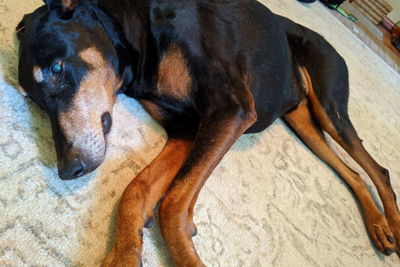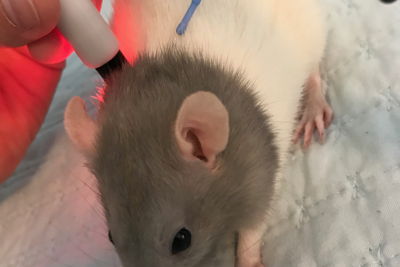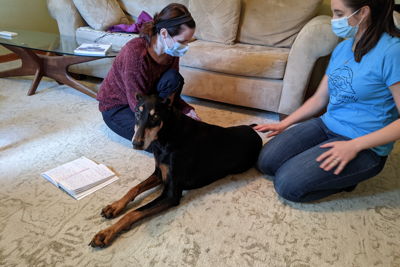Acupuncture
What is veterinary acupuncture?
Acupuncture is defined as the insertion of needles in specific areas of the body to produce a healing response. This practice was started in China over 2000 years ago and has evolved into a respected form of medicine to treat a wide variety of conditions in multiple species.
How does acupuncture work?
As described by Traditional Chinese Veterinary Medicine, points and meridians are used to access internal organs and to move Qi (energy) and blood to correct the imbalances that cause pain and disease syndromes.
The effects of acupuncture have been extensively studied by modern day science and clinical evidence suggests that stimulation at acupuncture points prompts the nervous and hormonal systems of the body to naturally alleviate pain and inflammation. In fact, clinical studies have proven that acupuncture stimulates nerves, increases blood circulation, relieves muscle spasms, and induces hormone release including endorphins and cortisol.
Which conditions have potential to be improved with acupuncture?
Acupuncture continues to be used in conjunction with Western medicine to treat a wide variety of conditions, including:- Musculoskeletal problems (Ex. osteoarthritis, IVDD, dysplasias, tendonitis, injuries)
- Neurologic problems (Ex. epilepsy, neuropathies, Wobbler’s syndrome)
- Respiratory problems (Ex. feline asthma, chronic bronchitis, collapsing trachea)
- Skin problems (Ex. acral lick granulomas, atopic dermatitis, alopecia)
- Gastrointestinal problems (Ex. diarrhea, vomiting, inappetence, pancreatitis)
- Selected reproductive problems (Ex. Infertility, pseudopregnancy)
- Endocrine disorders (Ex. Cushing’s disease, diabetes mellitus, hypothyroidism)
How long does it take for acupuncture to work?
Because we are calling the body’s natural mechanisms to action, it can take time to see effects - just like diet and exercise. Some patients may feel the effects of acupuncture within hours or days, but most practitioners recommend between 4-6 weekly treatments to measure the pet’s response to acupuncture therapy.
While acupuncture can be a successful form of treatment for a variety of conditions, it cannot cure/reverse chronic degenerative conditions (ex. osteoarthritis, degenerative neuropathies, cancer). More so, the goal is to alleviate discomfort and provide the pet with quality of life.
What does an animal acupuncture session look like?
After getting a thorough history, performing a traditional exam and then a Traditional Chinese medicine exam, the acupuncture session will start with a couple of needles being placed at relaxation points for your pet. Depending on the individual’s treatment plan, approximately 10-20 needles will be placed and allowed to sit for 10-20 minutes. During this time, the pet may lay down and relax or may walk around comfortably in a small area. The needles are flexible and will gently bend with the pet as they sit, stand, walk or lay down. For pets that are needle-phobic, a low lever laser pen will be used to stimulate acupuncture points without puncturing the skin. The needles will be removed after the assigned amount of time and the session is complete.
In which cases should acupuncture be avoided?
While acupuncture is considered a safe form of medical treatment with minimal side effects, there are some health conditions where acupuncture should be used with caution or avoided. These conditions include:
- Some forms of cancer including mast cell tumors
- Pregnancy – acupuncture can induce labor prematurely
- Coagulation (blood-clotting ) disorders
- Electroacupuncture should be avoided in patients diagnosed with seizures or cardiac arrhythmias
Thus, it is important to have a full physical exam and thorough review of your pet’s history prior, including blood work and medical imaging, prior to starting acupuncture therapy.





